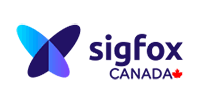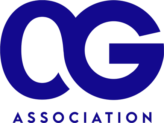
The Economist Intelligence Unit (EIU), in a 2020 report, The Internet of Things: Applications for Business: Exploring the Transformative Potential of IoT, proclaimed the Internet of Things (IoT) to be “at the centre of the digitalisation of the world economy” along with artificial intelligence and big data.
Citing a GSMA report, the EIU said: “IoT will generate $US1.1trn in additional revenue for companies across the world by 2025, representing almost one percent of projected global GDP.”
According to a McKinsey report from July 2019, Growing opportunities in the Internet of Things, “Implementing IoT solutions often generates efficiency gains of 20–30 percent by improving performance in areas such as delivery time and pricing for tailored opportunities.”
Adopt IoT or be left behind
After reviewing potential IoT applications across multiple industries the EIU said business leaders “need to consider if they should be using this technology,” because: “Those who do not may miss out on tangible benefits, or be left behind by competitors who have realised IoT-enabled gains in productivity or consumer experience.”
The specifics of IoT implementations will vary enormously across different industries, but to realise the benefits of IoT organisations must overcome its challenges. These include identifying IoT use cases, sourcing the sensors and other IoT devices needed, finding the most appropriate network to connect them and then building a solution to manage and monitor them and extract maximum value from the data they generate.
One thing almost all IoT implementations have in common is a wireless communications network to monitor and control IoT sensors and other devices.
Networks, the heart of IoT
Many organizations gain significant benefits from IoT by analysing and acting on data from their operations that was previously uneconomic, or impossible, to gather. To do this they need IoT devices that are low cost, robust and battery-powered and a wireless communications network that is low cost and highly reliable.
Cellular networks, with variants such as NB-IoT, LTE-M and 5G, are already ubiquitous and have variants to support IoT. They generally support high bandwidth applications at incremental cost for the volume of data. Other technologies have been developed specifically to support IoT applications where cellular may not be the best solution.
The main alternatives being the Sigfox 0G Network and LoRaWAN. Any organization can build and operate a LoRaWAN network for its own use, use it to provide IoT communications as a service, or to offer a complete IoT solution. As a result there are multiple LoRaWAN networks in every country, and network operators compete to provide the communications component of IoT implementations. Ultimately LoRaWAN is a solution for limited geographic areas, like individual manufacturing plants, whereas the 0G Network can cover large geographic areas in addition to limited geographic areas.

0G Network: supporting IoT globally
Sigfox is the world’s leading IoT service provider. It pioneered and patented the 0G Network technology dedicated to IoT, with the vision to power a global network. The 0G Network provides ultra-low power consumption, long-range and low-cost connectivity, unlocking the value of IoT use cases that demand long battery life, national public coverage with global scale and predictable cost.
Exclusive Sigfox 0G Network Operators in 72 countries have seen the need, and the opportunity, to build, operate and commercialize wireless networks for IoT. They have chosen Sigfox 0G as their preferred technology. Between them, Sigfox and the 0G Network Operators have invested more than $US1bn, and their networks cover an area home to more than one billion people, and counting.
0G Networks are able to provide reliable communications to power hundreds of millions of IoT devices designed to send small amounts of data. A stringent focus on developing low-cost, high-quality solutions ensures 0G Networks will be the most competitive solution for any low bandwidth application.
Sigfox’s policy is to licence only one exclusive operator for any country. Licenced operators commit to maintaining global standards and service level agreements. This model for 0G Network operation brings two important benefits for customers: global connectivity and global co-operation.
0G Network means global roaming and global collaboration
All 0G Networks are interconnected enabling an IoT application to operate seamlessly across any of the 72 countries with 0G Networks. And because 0G Network Operators do not compete with each other, they are able to share knowledge and details of practical applications to help customers overcome the barriers to IoT adoption, and to help IoT solutions developed in one geography gain traction in others.
With hundreds of IoT deployments supported on 0G Networks, whatever use case a customer can envision, there is a good chance somebody, somewhere on the 0G Network has already developed and deployed something similar.
0G United Nations accelerates global IoT adoption at lower cost
To leverage their individual experiences for the benefit of customers, 0G Network Operators have come together to form 0G United Nations (0G UN). This association enables customers and potential customers of any 0G UN member to tap into the combined knowledge and experience of all members when developing solutions, and enables solution developers to identify and take advantage of opportunities globally.
0G United Nations is the only not-for-profit IoT association supporting local, national and global IoT applications in a truly collaborative way, because individual members have exclusive rights within their country. This unique structure enables members to freely share application best practices relating to customer solutions, operational costs, network optimization and many other areas, with the shared objective of rapidly accelerating adoption of IoT around the globe, and reducing costs.
So, for example, if a water utility in one country is looking to develop and deploy an IoT solution that combines smart, remotely readable meters with remotely controlled valves, 0G UN would be able to help it identify similar applications deployed by any of the 72 Network Operators that were supporting such a system. At a more granular level 0G UN is able to provide feedback on how 0G enabled devices have been deployed and configured for specific use cases, solve specific problems, and on how overall costs have been minimized.
Opening up global IoT opportunities
0G UN is also able to help developers take their solutions to global markets. Konvoy is an Australian company that supplies beer kegs on rental to more than 200 brewers in Australia and New Zealand. Being able to track kegs is fundamental to the viability of its business.
Konvoy worked with Thinxtra, the Australian 0G Network Operator, to take traditional RFID keg tracking to the next level. IoT device manufacturer UnaBiz, which is also a 0G Network Operator in Singapore, was commissioned by Konvoy to develop a device able to report, via the 0G Network, the location and temperature of beer kegs, along with impact and other movement data.
Thanks to the low power requirements of the 0G Network, the devices are able to send this data several times each day and still operate for seven years on an internal battery.
This innovative and game-changing service offering is now being marketed globally. As a global company, Sigfox is always on the lookout for IoT solutions with global potential and is able to use its resources to assess the potential for any use case in any of the markets served by 0G Networks.
Organisations around the world realise the value of IoT
ALPS Electric Europe GmbH partnered with Sigfox to deliver an IoT-enabled solution for DHL connecting 500,000 roll cage trackers to integrate location monitoring and analytics with its existing business processes to minimize loss of roll cages, ensure fast, reliable delivery, and seamless customer service. The solution has global traction and scale for improved supply chain efficiency.
In a similar use case scenario, Irish Sigfox 0G Network Operator VT – IoT worked closely with Irish postal company AN Post and the Danish Post Office to track thousands of roll cages, carts and containers for parcel processing and distribution.
An example in the utility industry is the collaboration with Tecsys, an IoT solution provider for powerline monitoring. It enables the powerline operator to quickly and easily find fault points in the power grid. Sigfox 0G Network Operators WND LATAM and Things-on-net, Thailand have been helping local utilities to improve operational efficiency and customer service with Tecsys’ 0G enabled solution.
IoT is still a rapidly evolving area, but one with enormous potential. Many organisations are aware of its potential but struggle both to identify the use cases that will bring the greatest benefit, and then to identify, source and deploy the technologies necessary to achieve their chosen deployment model.

Customer Benefits of 0G United Nations
In summary, once an organization has identified a use case, it then needs to determine what data it must collect, devices to collect that data, a network that will support the constraints of its solution, such as low power, long-range, long battery life, and find a system capable of gathering and analysing all the data and of managing the connected devices.
IoT adoption is increasing rapidly and there are no standard solutions to many of these challenges, but neither are they unique. Someone somewhere has faced and overcome most of them. 0G UN embraces the most experienced body of IoT knowledge and represents the broadest ecosystem in the global IoT market and is able to provide unique support to help organisations overcome the challenges of IoT and realise the business value.
0G UN combines local expertise and customer focus with global reach. It spans multiple industries and an enormous range of IoT applications, all built on robust standards to ensure future proof applications.
Any member can be a trusted advisor that organizations are able to tap into for solutions rather than re-inventing the wheel themselves. Each 0G UN member is able to leverage the power of the alliance to help customers and IoT application developers maximize the enormous potential of IoT.

Kent Rawling
President and CEO of Sigfox Canada
Sigfox 0G Network Operator

About Sigfox Canada
As the exclusive Sigfox 0G Network Operator in Canada, Sigfox Canada builds, owns, operates and commercialises the global 0G Network in our region. We provide coast-to-coast IoT connectivity and offer technology solutions for a wide variety of use cases across many industries. The global 0G Network is designed to connect billions of devices to the Internet of Things while consuming as little energy as possible. Sigfox Canada is 100% Canadian owned and is headquartered in Toronto. For more information visit sigfoxcanada.com.

